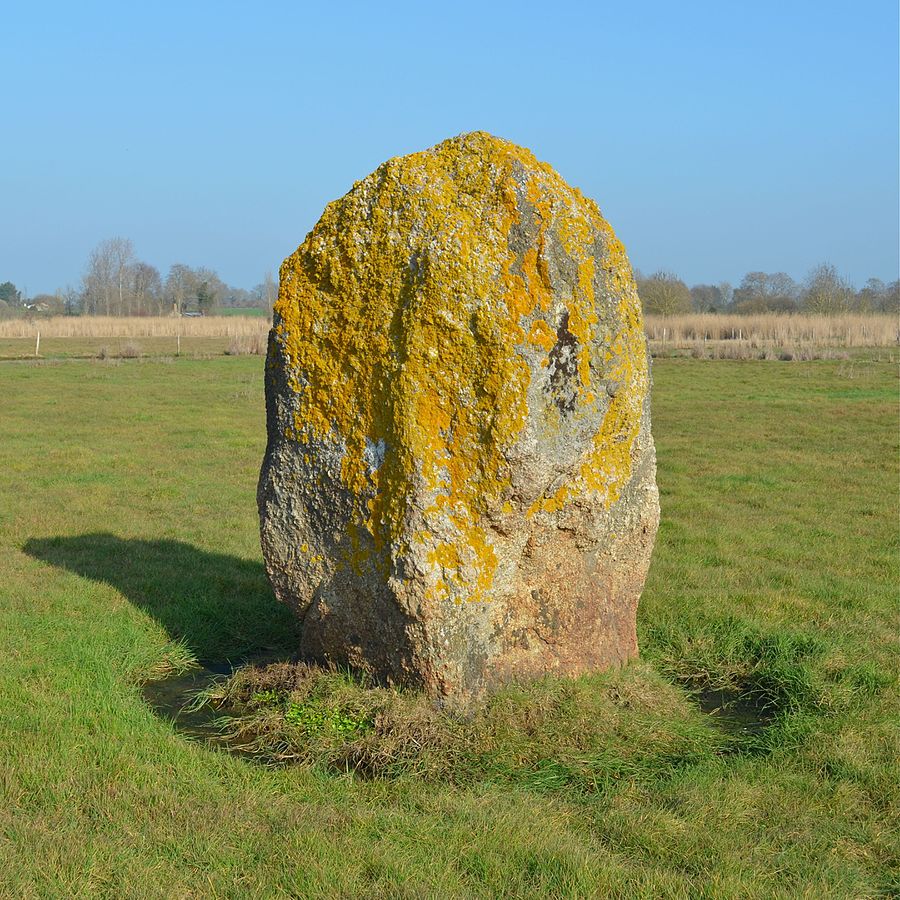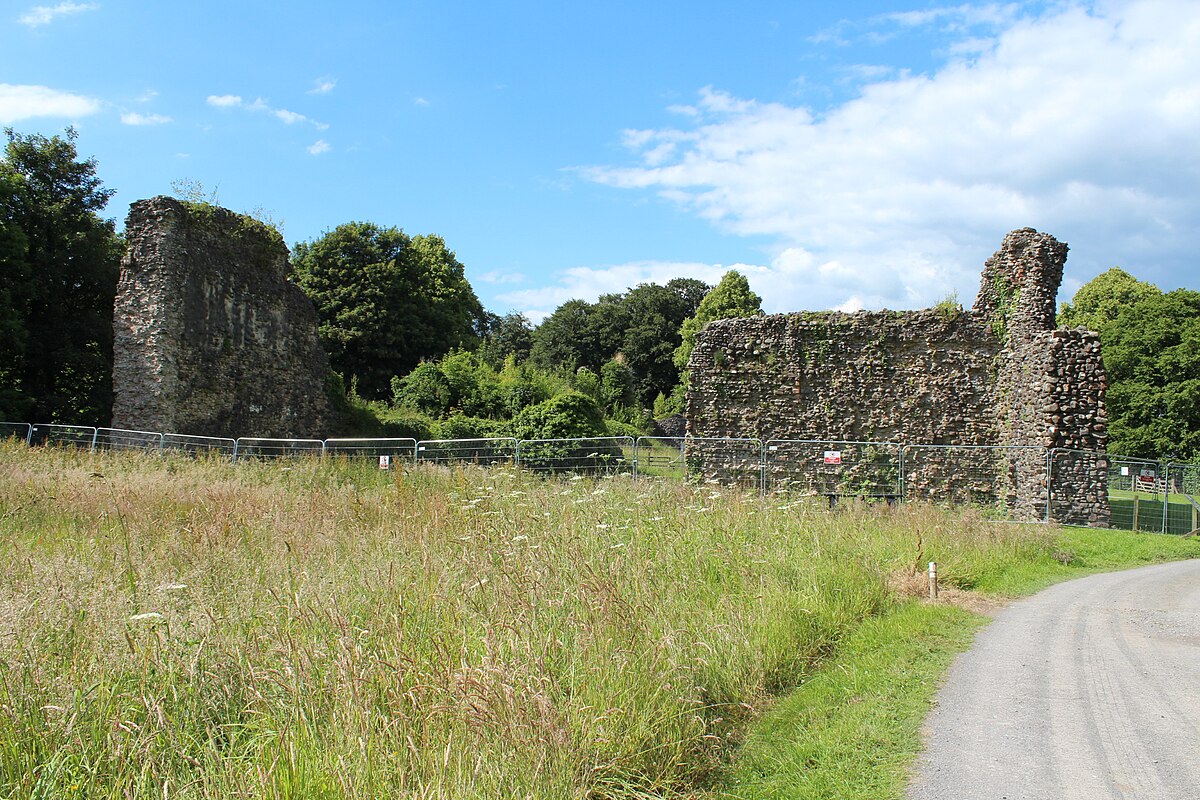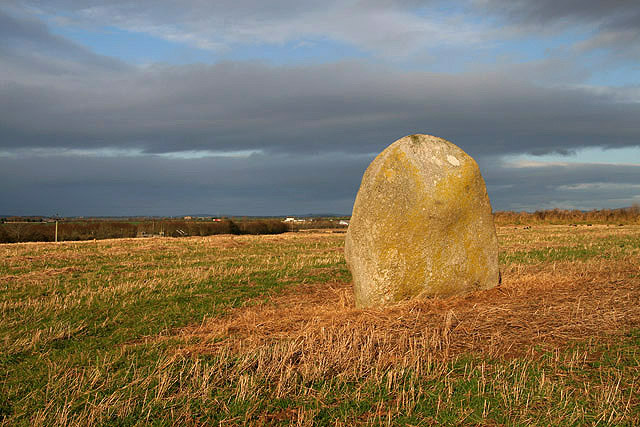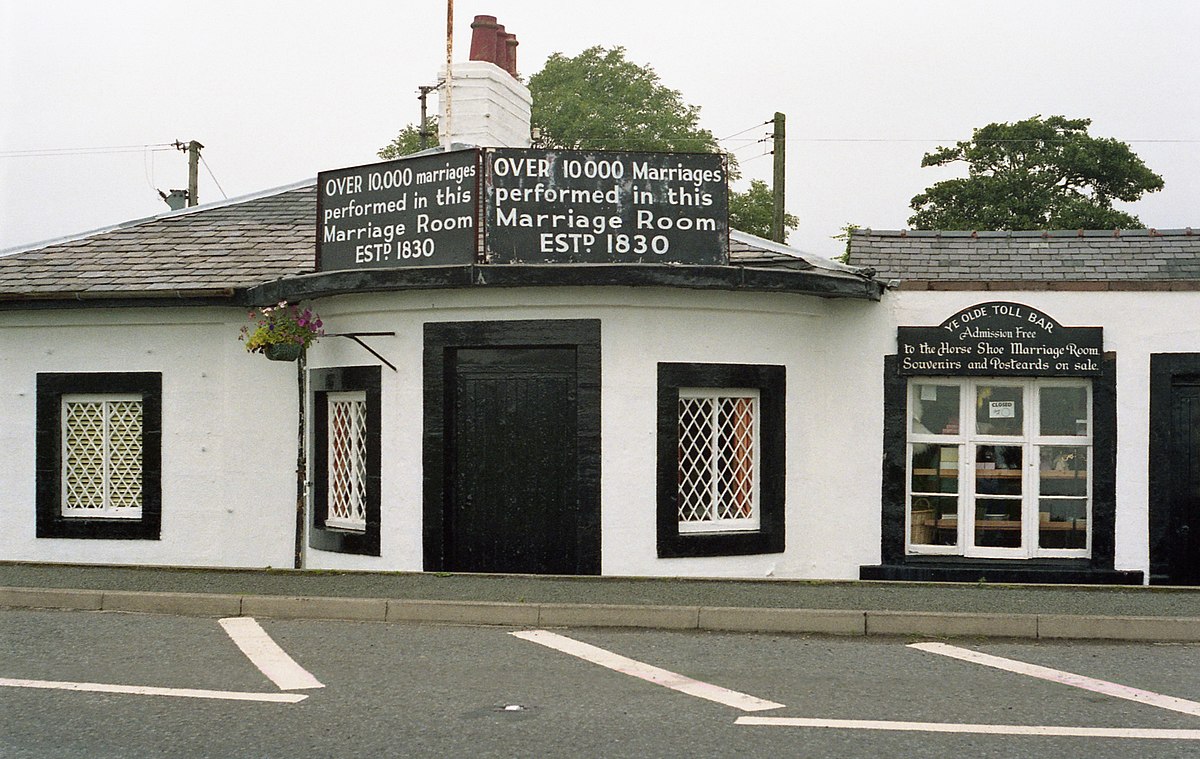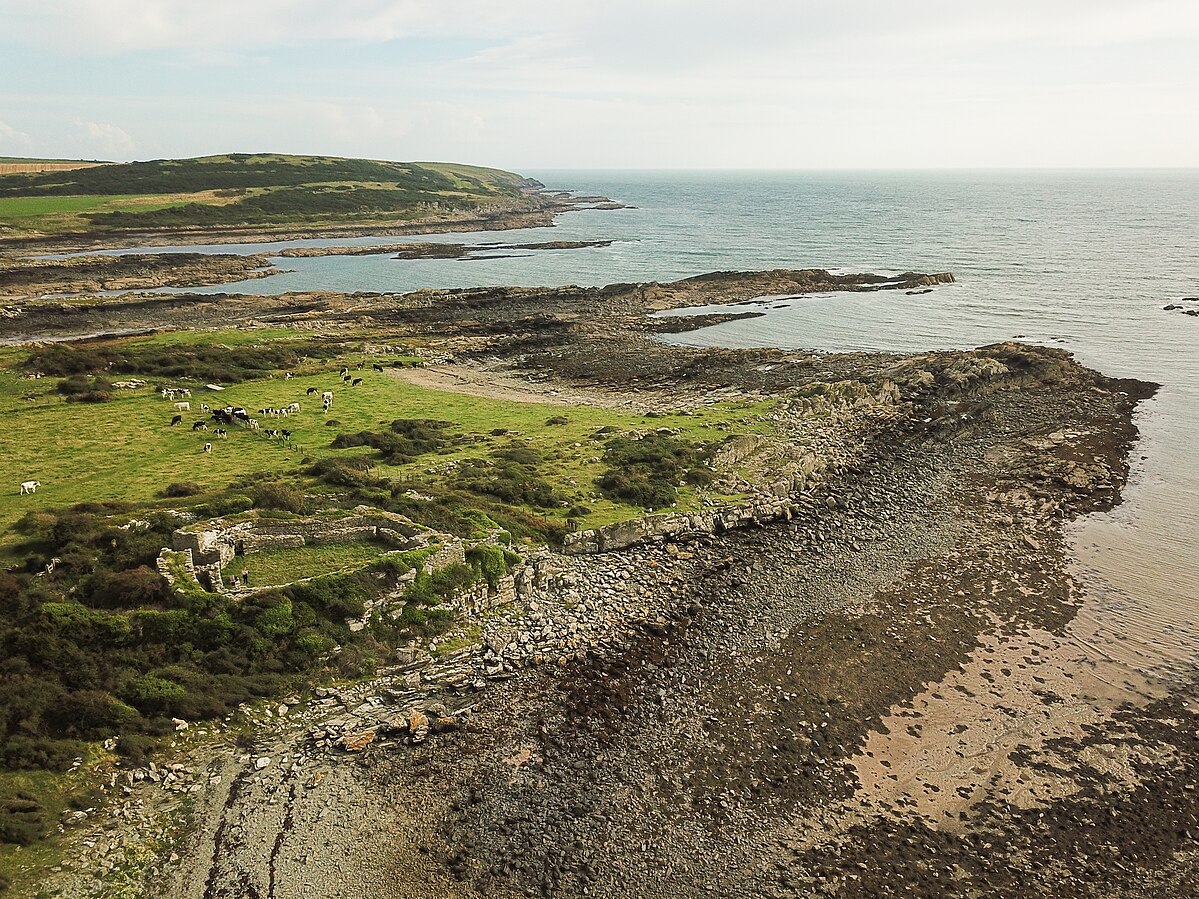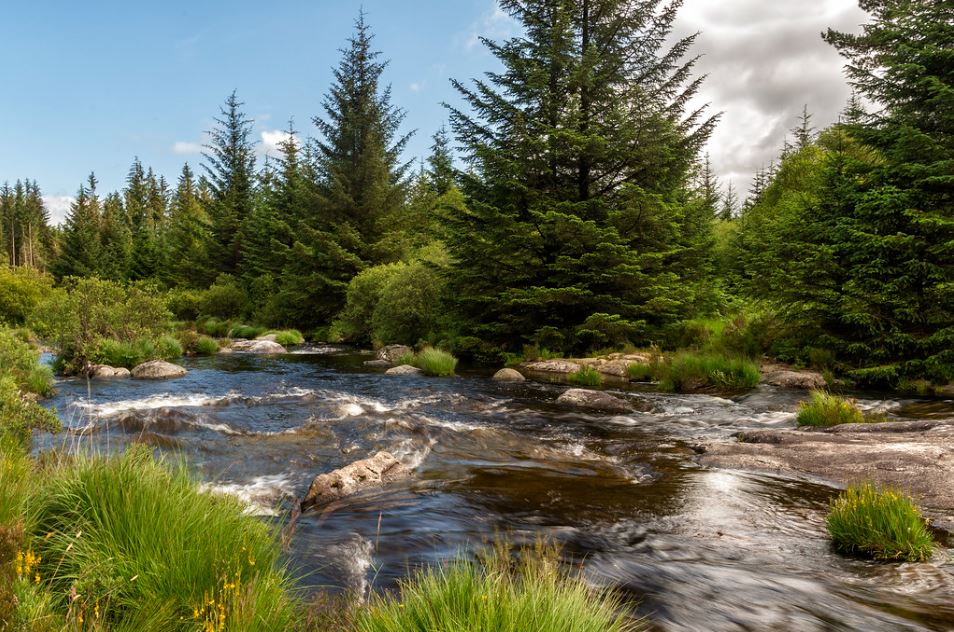As you navigate Scotland’s Dumfries and Galloway region, you may see a giant megalith in the distance. That’s the Stone of Lochmaben, a lone standing stone with a tragic story. As far as standing stones go, not many are as intertwined with history as the Lochmaben Stone in Scotland.
Its unique history makes sense since the Stone sits on the historical border between Scotland and England, where the once-warring nations would fight on the Lochmaben Stone site. Today, the Lochmaben Stone stands on the comparatively peaceful Old Graitney Farmhouse and is sometimes called the Old Graitney Stone.
If you want to learn about the Stone, its history, connections to a Celtic God, how to get there, and the top attractions to look forward to during your visit, then look no further than our complete guide.
History of Stone of Lochmaben
It’s speculated that the Stone of Lochmaben was originally part of a complete stone circle. Likely composed of nine stones, three remaining stones are left of the stone circle that can be seen today. The Lochmaben Stone is the most visually distinctive of the three, with the remaining partially or completely buried underneath the earth.
The stone circle likely has Neolithic origins, but the consistent battles between Scotland and England near the borders have contributed to the destroyed Neolithic stone circle. While the intact no longer exists, the Stone of Lochmaben has become an unparalleled historic monument alongside Scotland and England’s turbulent wars.
Monument of the Scottish Marches
Since the 1300s, the Stone of Lochmaben has served as a marker for the England-Scotland border. The weathered granite stone is an identifiable monument frequently used by English and Scottish wardens as rendezvous points, a site to exchange prisoners, and a denotation of the southern end of the Scottish realm according to ancient geographical sources.
In 1398, for example, the Stone of Lochmaben was used to exchange prisoners of war by the Dukes of Rothesay and Lancaster, who were dukes for Scotland and England, respectively.
During the same year, Scottish and English ambassadors agreed that “The men of Galloway, Nithsdale, Annandale and Crawford Muir shall meet with the Wardens of the West March for redress of claims at Clochmabanstane.” Clochmabanstane was the name given to the Lochmaben Stone during this time.
They would use the Stone for disputes, redresses, and discussions, including in 1473 when English and Scots representatives met to discuss a long-running dispute about the River Garth. This is supported by a 16th-century reference claiming, “Loughmaben Stone standyng in Scotland, where we have been accustomed to keep days of marches.”
The Battle of Lochmaben Stone
Several wars took place over the England-Scottish border near the Lochmaben Stone, one of the most famous of which was the Battle of Sark (also known as the Battle of Lochmaben Stone). This was detailed in the Auchinleck Chronicle, which notes that on 23 October 1448, Scottish armies assembled and won against an invading English army.
It’s stated that the Earl of Northumberland, who championed the English forces, made camp near the Lochmaben Stone. This location was poorly chosen as it stood in a waterway between the River Sark and Kirtle Water. As a result, when the England and Scottish armies met in combat, the English forces were routed by the rising tide.
While there is no indication of where the battleground exactly was, the battle is historic as around 3,000 English soldiers were killed in the fight, with Scottish losses ranging only from 26 to 600.
The Fall of the Lochmaben Stone
Sadly, the Stone of Lochmaben isn’t without a bit of tragedy. During the 1800s, when many Neolithic sites in the UK were being destroyed for agriculture, the stone circle at the heart of Lochmaben wasn’t safe.
The tenant at the Old Graitney Farm decided that the stones were disrupting their agriculture and cleared the remaining three stones on his farm. He and his workers began their work digging deep pits for the rocks and managed to completely bury one and partially bury another before Lord Mansfield stopped them (which is what local tradition suggests).
While one Stone remains, another stone pit yielded one of the stones into the earth. Although one stone fell and another was buried, you can still see the upper stone sticking out of the earth. Luckily, the tradition of meeting at the Stone of Lochmaben lives on today and is reminiscent of the tribal assembly point that it once was several thousand years ago.
Lochmaben Stone Folklore
The Lochmaben Stone is filled with fascinating folklore that archaeologists have debated for years. The name of the Stone connects it firmly to the Celtic God Mabon and likely served as one of many sites of worship to this Celtic God. However, this name is the only thing that remains from this time.
The domains surrounding Mabon aren’t sure, but the Romans made the deity a British Apollo, which could point to the types of prayers made to Mabon. A famed writer, Tolstoy, even wrote about the Lochmaben Stone, referring to the site where Merlin likely carried out ceremonies.
In some interpretations of the Arthurian tales, the Stone of Lochmaben is considered the Stone that King Arthur pulled Excaliber out of!
How to Get to Stone of Lochmaben
The Stone of Lochmaben sits on the border between England and Scotland, which makes it easy to reach using a car or public transportation. The Lochmaben Stones lies nearly a mile west of Gretna Green; here are the most direct routes to the Lochmaben Stone from the closest central town, Dumfries:
By Car
Driving around Dumfries and Galloway is a gorgeous way to experience the Scottish frontier. Here’s how you can reach the Stone of Lochmaben from Dumfries:
- From Dumfries, head east from the city along the A780 until you reach the roundabout. Take the second exit and continue east along the A75.
- Travel along the A75 until you begin to see signs for Gretna.
- Take a right onto the B721 and then a left onto Loanwath Road.
- Before you enter Gretna proper, take a right towards the National Cycle Road 7.
- Continue until you reach the Channel of River Esk.
There is parking nearby, and the Stone of Lochmaben sits a few minutes walk away from the road.
By Public Transit
If you don’t plan to rent a car and instead use Scotland’s public transit system to get where you need to, then don’t worry! Excellent public transit options are available that take you all over the country, even the Stone of Lochmaben. Here’s how to reach the Stone from Dumfries:
- From Dumfries, take the ScotRail to Carlisle from Platform 1.
- Travel along the line for two stops, hopping off at the Gretna Green Station.
- Take a stroll through Gretna and its abundance of stores towards the River Esk, where you’ll be able to find the Stone of Lochmaben.
The journey should take about an hour to traverse, although most of it is taken up by the walk from the Gretna Green stop to the Stone (about 35 minutes).
Things to Do in Stone of Lochmaben Stone
Once you’ve made the journey to the Stone of Lochmaben, you have plenty of things to look forward to while you’re there. Here are the top things to do during your visit to Lochmaben Stone!
Admire the Megalithic Stone of Lochmaben
Only the Stone of Lochmaben remains at its full height of the nine upright stones. Several smaller stone survives nearby, but the main highlight is the Stone of Lochmaben. Some are called the Graitney Stone, which stands around 7 feet high and 18 feet wide and is clearly visible compared to the surrounding landscape.
Please take a moment to admire the Neolithic Stone and its fascinating history while you’re here, with gorgeous views out to the River Esk.
Stop by the Romantic Gretna Green
While visiting the Stone of Lochmaben, ensure you stay a while at the nearby town of Gretna Green. Gretna was a romantic site for centuries where young English couples would elope to become betrothed over the border.
Today, it’s still considered an extremely popular site for couples to spend a romantic evening together. We’ve written an entire article detailing the attractions at Gretna that you should read if you’re interested in visiting the town.
Go for a Hike
Dumfries and Galloway is a picturesque region of Scotland that makes it great for hiking through the Scottish Lowlands. The flowing River Esk is a particular highlight, and if you have the time to follow it all the way out to the Atlantic, you’ll be treated to even more beautiful coastal views with England on one side and Scotland on the other.
If you want a more structured hiking destination, the Annandale Way sits a few miles west of Gretna Green. Here, you can enjoy opportunities to see Scottish wildlife, including migratory birds that call the region their temporary home. The smell of wild garlic permeates the hiking trail, making it a feast for the senses.
Explore Dumfries and Galloway
If you’re up for a hike in and around the Stone of Lochmaben, you may be interested in the other attractions that Dumfries and Galloway offer.
Highlights like Caerlaverock Castle, Dumfries Museum, Culzean Castle, and the Birthplace of Robert Burns can be found all over Dumfries and Galloway in cities like Ayr, Dumfries, and Gretna Green.

